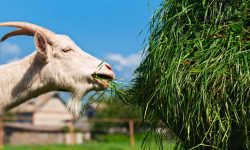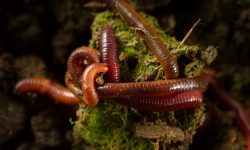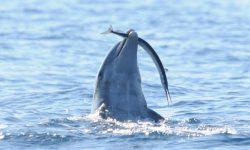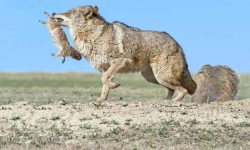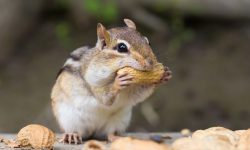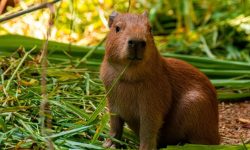Crabs are some of the most fascinating creatures in the marine world — ancient, adaptable, and surprisingly intelligent scavengers. Found in oceans, rivers, mangroves, and even on land, these crustaceans have evolved to eat a wide range of foods depending on their habitat. But what exactly do crabs eat, and how do they find their meals beneath the waves or along the shore?
Crabs are omnivorous scavengers, meaning they eat both plants and animals. Their powerful claws allow them to crush shells, shred plants, and tear apart smaller creatures. From algae and mollusks to fish scraps and fruits washed ashore, crabs are opportunistic feeders that play a vital role in keeping their ecosystems clean.
In this article, we’ll explore 20 foods crabs love the most, explaining how these meals support their health, growth, and survival — both in the wild and in captivity.
Understanding the Crab Diet
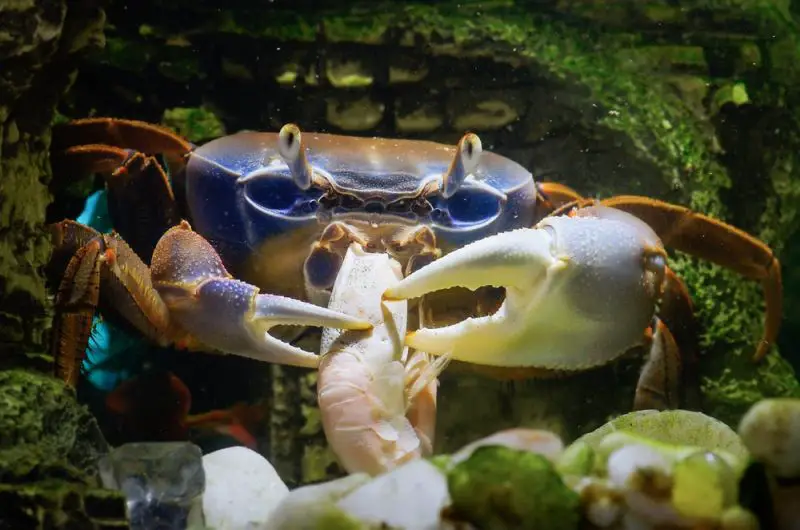
Crabs: Nature’s Opportunistic Feeders
Crabs are well-known for eating almost anything they can find. In the wild, they feed on live prey, dead animals, plant material, and even waste. This scavenging behavior makes them essential cleaners of their environment.
While most crabs are omnivorous, some species lean toward herbivory or carnivory. For example, hermit crabs enjoy plant-based meals, while blue crabs and Dungeness crabs actively hunt small fish and shellfish.
Feeding Mechanisms
Crabs don’t have teeth — instead, they use their chelae (claws) to grasp, crush, and tear food before passing it to their mouthparts. Inside their stomach, a structure called the gastric mill (made of small grinding plates) helps them chew food internally.
This unique anatomy allows crabs to process a wide range of textures — from soft algae to hard shellfish.
Habitat and Diet Diversity
A crab’s diet depends heavily on where it lives. Marine crabs feed on algae, clams, fish, and detritus on the seafloor, while freshwater crabs prefer aquatic plants, insects, and worms. Land crabs often eat fallen fruits, leaves, and carrion near shorelines.
Their flexible diet allows crabs to survive in diverse environments — from coral reefs to coastal mangroves to tropical forests.
20 Foods Crabs Love the Most
1. Algae
Algae is one of the most common foods for crabs. It grows abundantly in marine and freshwater environments, making it an easy and nutritious meal.
Algae provides essential vitamins, minerals, and carbohydrates that fuel a crab’s daily activity. Many crabs, including hermit and fiddler crabs, scrape algae off rocks and shells using their pincers.
For aquarium crabs, providing dried seaweed or spirulina mimics this natural diet and helps maintain healthy coloration.
2. Plankton
Small crabs and crab larvae often feed on plankton — tiny organisms floating in the water. This includes both phytoplankton (plants) and zooplankton (animal matter).
Plankton provides essential proteins, fats, and nutrients that support growth and molting. It’s especially vital during a crab’s larval stage when they are too small to hunt larger prey.
Many aquatic crabs filter plankton directly from the water, showcasing their diverse feeding adaptations.
3. Mollusks
Mollusks such as clams, mussels, and snails are a favorite for many larger crab species. Crabs use their strong claws to crack open shells and extract the soft meat inside.
These meals are high in protein and calcium, both of which are crucial for maintaining a crab’s exoskeleton strength.
Mollusk consumption also supports molting cycles — when crabs shed their shells and need nutrients to form new ones.
4. Small Fish
Crabs are quick scavengers and sometimes active hunters of small fish. They either catch slow-moving species or feed on dead fish washed ashore.
Fish provide essential omega-3 fatty acids and protein that promote muscle growth. In aquariums, crabs often clean up leftover fish bits, keeping the tank balanced.
This carnivorous side of crabs highlights their adaptability and efficiency as coastal predators.
5. Worms
Worms, especially marine polychaete worms and earthworms, are rich in protein and easy for crabs to consume.
Crabs dig through the substrate or mud to locate these wriggling treats. Worms provide not only energy but also moisture, which helps maintain hydration in land crabs.
This food source is particularly common for freshwater and estuarine species that live in soft sediment environments.
6. Detritus (Decaying Matter)
Detritus — decomposing organic material such as dead plants, animals, and microorganisms — is one of the main foods for scavenger crabs.
By feeding on detritus, crabs recycle nutrients back into the ecosystem and prevent the buildup of decaying matter.
This diet makes crabs critical environmental cleaners, helping maintain a healthy balance in coastal and marine ecosystems.
7. Carrion (Dead Animals)
Crabs are natural scavengers and will readily feed on carrion. This includes dead fish, birds, or marine mammals that wash ashore.
Carrion provides dense protein and fat, sustaining crabs during lean seasons when live prey is scarce.
By consuming carrion, crabs also help reduce disease spread in marine ecosystems — functioning like the ocean’s sanitation team.
8. Shrimp
Shrimp and other small crustaceans are a favorite prey for many carnivorous crabs like blue and stone crabs.
These meals are high in protein and chitin, supporting healthy shell development. Crabs use their claws to grab shrimp quickly, often ambushing them from below.
Feeding on shrimp not only offers energy but also replenishes essential minerals used during molting.
9. Seaweed
Seaweed is a vital part of a crab’s plant-based diet. It’s packed with vitamins A, C, and K, as well as iodine and fiber.
Crabs tear off soft pieces of seaweed using their claws or graze on drifting fragments. This fibrous food helps regulate digestion and supports molting cycles.
In captivity, dried nori sheets are an excellent alternative, ensuring balanced nutrition for pet crabs.
10. Coral Fragments
Certain reef-dwelling crabs feed on algae and organic particles that grow on coral surfaces. While they don’t eat coral skeletons directly, they scrape off the soft outer tissue or detritus that accumulates on coral heads.
This behavior helps keep coral reefs clean and free from smothering algae.
By feeding on coral surfaces, these crabs contribute to the health and balance of reef ecosystems.
11. Insects
Land and mangrove crabs sometimes hunt or scavenge insects that fall into the water or crawl along the ground.
Insects like beetles, ants, and flies are rich in protein and easy to catch. Crabs break them apart with their pincers before eating the soft insides.
This insect-based feeding demonstrates how adaptable crabs are in both aquatic and terrestrial environments.
12. Fruits
Land crabs frequently eat fallen fruits like mangoes, bananas, and coconuts. Fruits provide natural sugars and hydration that help them survive in tropical conditions.
They use their claws to peel and scoop out the soft, juicy flesh. The vitamins from fruits also support shell pigmentation and immune health.
In captivity, feeding small portions of fruit once or twice a week adds healthy variety to a crab’s diet.
13. Vegetables
Vegetables such as lettuce, spinach, peas, and carrots are excellent for pet crabs. These provide fiber, vitamins, and hydration.
Crabs enjoy soft, leafy greens that are easy to chew. For land crabs, vegetables simulate the fresh plant material they’d find near shorelines.
Steaming or chopping vegetables makes them more digestible and prevents spoilage in tanks.
14. Clams
Clams are one of the most nutritious foods crabs can eat. Their soft flesh is rich in minerals like calcium, zinc, and phosphorus.
Crabs crack clam shells using powerful pincers, consuming the meat inside with ease. This helps strengthen their claws and maintain a healthy exoskeleton.
In the wild, crabs often rely on clams as a key food source during high tides.
15. Barnacles
Barnacles, though tough, are sometimes pried off rocks and eaten by larger crabs. The inner flesh is nutrient-rich and high in protein.
Crabs like green shore crabs use their claws to chip away the outer shell and extract the soft interior.
Eating barnacles also helps control their populations, maintaining balance in intertidal zones.
16. Jellyfish
Some opportunistic crabs feed on jellyfish that drift close to shore or get stranded in shallow water.
Jellyfish are mostly water, but they provide small amounts of protein and minerals. Crabs nibble on the gelatinous tissue carefully, avoiding stings when possible.
While not a staple, jellyfish consumption shows how crabs use every available resource for nourishment.
17. Sea Cucumbers
In tropical waters, crabs sometimes feed on sea cucumbers, scraping off soft tissue or consuming decomposing remains.
These animals provide valuable protein and trace elements like iodine and magnesium.
By consuming sea cucumbers, crabs further assist in cleaning the seafloor and recycling organic matter.
18. Sponges
Some reef crabs feed on small marine sponges or the microorganisms living within them. These foods offer a combination of protein and plant-like nutrients.
Crabs scrape pieces of sponge tissue and digest them slowly, benefiting from their rich mineral content.
This behavior supports a diverse diet, ensuring crabs receive all essential nutrients even in coral habitats.
19. Other Crabs (Cannibalism)
Cannibalism among crabs is not uncommon, especially during molting periods or when food is scarce. Larger crabs may eat smaller or recently molted individuals.
This behavior provides an immediate source of protein and calcium needed for shell regeneration.
Although brutal, cannibalism is a natural survival strategy that helps regulate population density in competitive environments.
20. Human Food Scraps
In coastal areas and ports, crabs often scavenge leftover human food such as bread, meat, and rice. Their scavenging nature drives them to investigate any edible material.
While these foods provide calories, they are not healthy for crabs long-term, as processed ingredients can disrupt their digestion.
Nevertheless, it shows the incredible adaptability of crabs in coexisting with human activity and finding sustenance even in polluted habitats.
Frequently Asked Questions (FAQs)
Do crabs eat meat or plants?
Crabs are omnivores, meaning they eat both meat and plant material. Their diet includes algae, mollusks, fish, fruits, and decomposing matter.
What do baby crabs eat?
Baby crabs, or larvae, feed on plankton and microscopic organisms in the water until they grow large enough to eat algae and small prey.
What do crabs eat in aquariums?
In captivity, crabs can be fed algae wafers, small pieces of shrimp or fish, leafy greens, and fruits. A varied diet ensures they receive balanced nutrition.
Do crabs eat other crabs?
Yes, crabs may eat smaller crabs, especially after molting or in overcrowded conditions. It’s a natural behavior driven by survival instincts.
How often do crabs eat?
Crabs typically eat once or twice daily, depending on food availability. Wild crabs may scavenge continuously in tidal zones.
Conclusion
Crabs are nature’s ultimate recyclers — resilient, resourceful, and incredibly diverse in their diet. From tiny plankton and seaweed to clams and carrion, they consume almost anything the ocean or land provides. This adaptability has allowed them to thrive in every environment, from tropical reefs to rocky shores.
Understanding what crabs eat helps us appreciate their ecological importance. They clean up the environment, recycle nutrients, and support healthy food webs across marine ecosystems. Whether you’re observing them in the wild or caring for one in an aquarium, a well-balanced diet is the key to a healthy, active, and thriving crab.

